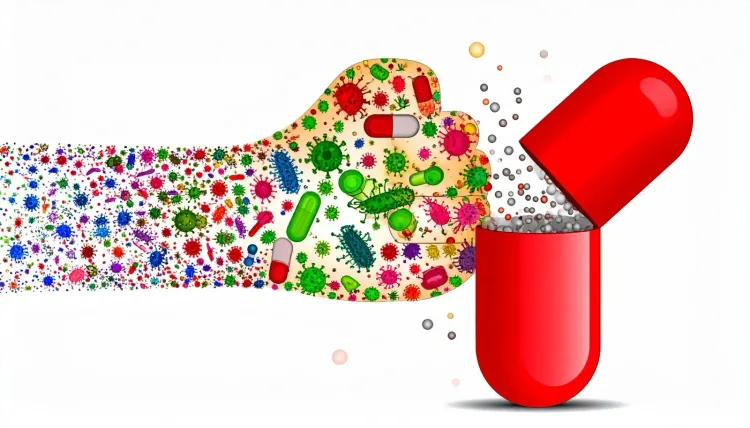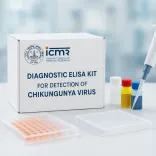Will Antibiotic Resistance Cause Treatment Costs to Soar from $66 Billion to $159 Billion by 2050?

Synopsis
Key Takeaways
- Antibiotic resistance leads to increased mortality and treatment costs.
- Projected healthcare expenses could rise from $66 billion to $159 billion annually by 2050.
- Low- and middle-income nations will be disproportionately affected.
- Enhanced access to quality treatments and innovation is essential.
- AMR may result in 38.5 million deaths from 2025 to 2050.
New Delhi, July 21 (NationPress) The growing resistance to antibiotics is projected not only to elevate mortality rates but also to escalate treatment expenses from the current $66 billion annually to $159 billion by the year 2050, as highlighted by a recent study.
Superbugs, or antibiotic-resistant bacteria, primarily arise due to the improper use and over-prescription of antibiotics. This situation can lead to increased hospital admissions and necessitate longer and more intensive stays. Treating resistant infections is approximately twice as costly compared to treating infections responsive to antibiotics, creating a major risk to both global health and economic stability. The study emphasizes that the adverse effects will be particularly severe in low- and middle-income nations.
Conducted by the Center for Global Development, the study merges projections of human health burdens with economic models to deliver a thorough examination of the implications of Antimicrobial Resistance (AMR) on worldwide economies and healthcare systems.
“Our findings indicate that the burden of antimicrobial resistance is most pronounced in low- and lower-middle-income countries. AMR increases healthcare costs by $66 billion, which is anticipated to rise to $159 billion under a scenario where resistance rates continue to follow historical patterns,” stated the researchers, led by Anthony McDonnell, a policy fellow at the Center for Global Development.
The investigation employed a comprehensive approach to gauge the economic toll of AMR. Health burden projections were sourced from the Institute for Health Metrics and Evaluation (IHME), which forecasts a 60 percent increase in deaths due to AMR by 2050. The number of individuals falling critically ill due to drug-resistant bacteria is also expected to rise.
According to IHME's health burden estimates, if resistance trends continue as they have since 1990, AMR is projected to result in 38.5 million deaths between 2025 and 2050.
“If resistance rates mirror historical trends since 1990, the direct healthcare expenses associated with AMR are on track to reach $159 billion annually by 2050 (equivalent to 1.2 percent of global health expenditures). This spike is attributed to increased treatment intensities and economic growth in regions most impacted by AMR,” the researchers added.
The study advocates for enhanced innovation and improved access to high-quality treatments.
It also revealed that if AMR were eradicated, “the global population would be 22.2 million larger by 2050.”









